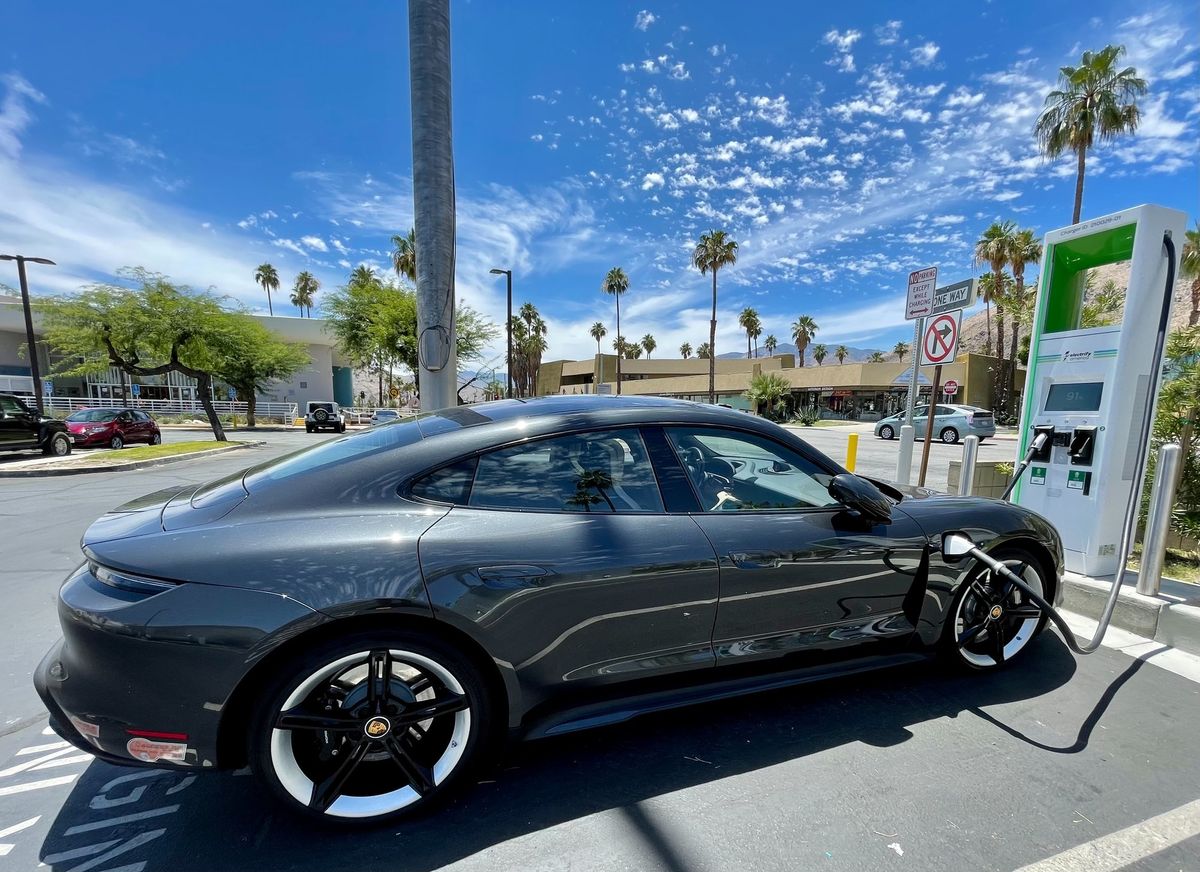Electric Cars: Where’s the Juice?

With gas prices at 40-year highs and popular consciousness of the perils of global warming climate change increasing, you may be thinking it’s time to look into buying an electric car…seriously.
You wouldn’t be alone. Including hybrids, sales of electric cars made up 7.2% (accounting for 5.6 million vehicles) of global car sales in the first half of 2021, according to Utility Dive’s November publication. That’s a steady and significant increase in the past three years: from 2.6% in 2009 and 4.3% in 2020. In the U.S., Bloomberg NEF predicts that when the final 2021 numbers are tallied, electric vehicles will account for 5% of US car sales.
That belief is credible when you consider GM, Ford, and other automakers have committed to making all new-car sales zero emission by 2040. New York and California have made similar pledges, though the U.S. itself has not.
The big battery surge
It’s not surprising, then, that sales of electric car batteries are surging. According to VC Elements newsletter, the market for these lithium-ion batteries is now worth $27 billion a year and could reach $127 Billion a year by 2027 if the appetite for electric cars continues to increase as projected.
There’s already heavy competition in this battery market, and so far it’s been Asian companies that are benefiting, with China’s CATL at 32.5% of the market in first place, followed by Korea’s LG Energy Solution at 21.5%, and Japan’s Panasonic at 14.7%.
As Western countries look to reduce their reliance on China and various governments pledge to support lower carbon emission targets, next-gen electric car batteries are being developed by such companies as Ionic Materials, QuantumScape, Sila Nanotechnologies, Sion Power, and Sionic Energy.
But buying a spanking new battery for your electric car is one thing; keeping it charged is quite another.
Electricity essentials
First, a quick primer on electricity.
There are two types of currents:
- AC Alternating current. This is what you use in your home.
- DC Direct current. Tesla and several other top-range cars use only DC.
AC current is cheaper but takes longer than DC to fully charge your car – eight hours vs as little as 10 minutes. If you drive, say, 100 miles a day, you’re a prime candidate for “range anxiety” – constantly stressed over whether you’ll be able reach the next charging station before running out of juice.
Then there’s always the question of which current will be available, and at what price. It’s a bit like wondering where to buy gas before getting on the freeway.
Or not.
Think of your car as a smartphone
Think about the charging issue not as though you were looking for a gas station along a remote road, but as though you were looking for a point to recharge your smartphone.
Looking back over the past few years, we can see, anecdotally, that the number of public options for re-charging our phones has proliferated: airports, department stores. In Paris, you can recharge your phone at bus stops!
But the same cannot be said for the infrastructure for electric car charging points according to the 2021 Arcadis Global Electric Vehicle Catalyst Index. Urban areas have a lead, given a small proliferation of point-to-point electric car rentals patterned after the urban bike rental model. Electric car battery charging can also be done at home, though you’ll likely be using the slower AC not high-speed DC.
But elsewhere, inadequate charging capabilities are a serious barrier to electric vehicle adoption, and the transition from carbon-burning gas guzzlers to clean electricity cannot happen without it, especially in rural areas and disadvantaged communities. A confluence of governmental support and private sector ingenuity is making inroads.

Public-private propulsion
In the U.S. on the government side, the Biden administration’s $1 trillion infrastructure bill authorizes a nationwide network of 500,000 charging stations, sets aside $5 billion for states to build them, and provides an additional $2.5 billion for local grants to support charging stations in rural areas and in disadvantaged communities. The aim? Bring down the cost of electric cars to transform the U.S. auto industry.
A Russian start-up operating in Europe, initially targeting the London market, has created a new private sector “super-charger on wheels” prototype that will deliver the charge to you.
With initial private investment funding of $1.5 million, the firm produced its first L-Charge, a mini power plant independent of the power grid that provides a rapidly scalable ultra-fast charge powered by clean fuels: liquefied natural gas (LNG), hydrogen, or a mixture of both. There are two models: a stationary version and one on wheels.
Energy use statistics show the average charge for an electric car battery costs about $10 for 30 minutes, giving a range of 100 miles. Charging your battery with L-Charge will cost you about $1.00 per kilowatt per minute – almost twice as much as existing charging options – but in 10 minutes you will have enough charge to travel 250 miles without triggering range anxiety.
Compare that with the average car on U.S. roads today with a tank holding 15 gallons of gasoline: you can expect to travel 385 miles on the open road before needing a refill.
L-Charge currently services some of Moscow’s estimated 1,000 electric vehicles and is working on broadening its scope. In October L-Charge took a pan-European road show to meet potential customers and investors in Germany, Spain, Holland, and France. Producing more L-Chargers will both investors and customers as the mobile unit comes with a hefty price tag: about $200,000 each.
Given the promises made by government and companies alike, it’s a safe bet we’ll be seeing a surge in electric car production. It’s going to take continued creativity and combined private-public sector muscle to create the infrastructure to keep electric vehicles running once they’re built.
